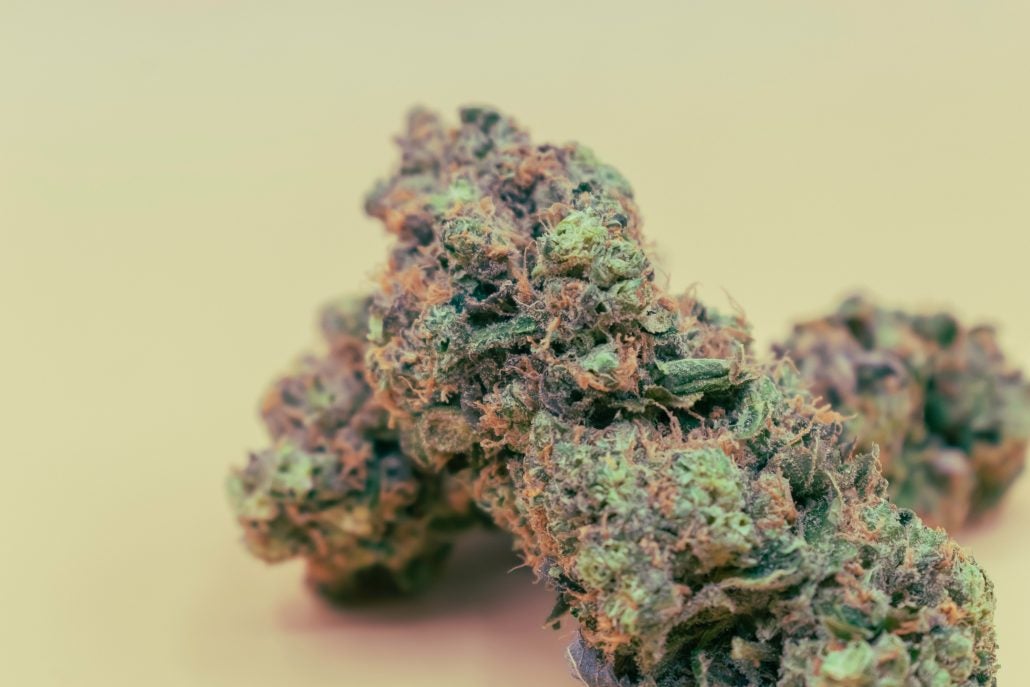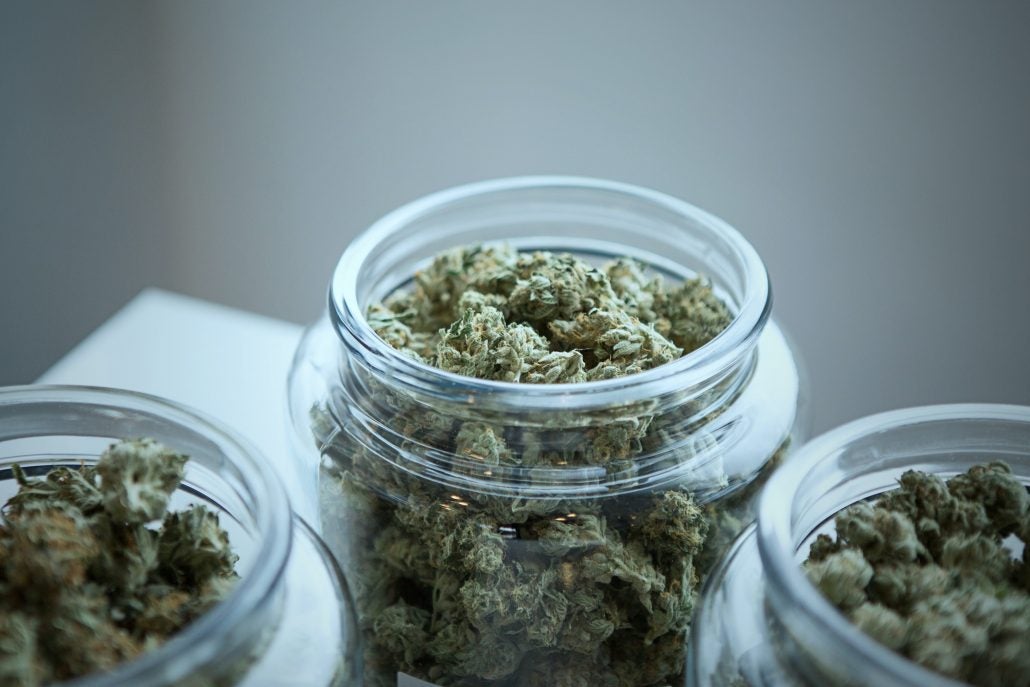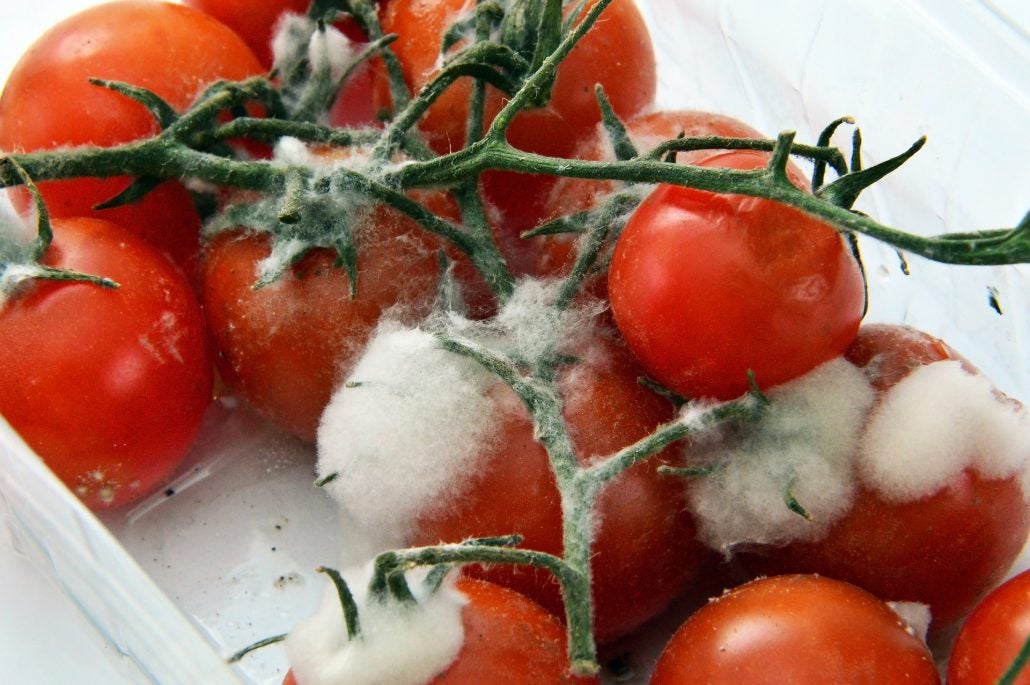Has your stash gone bad? What exactly is moldy weed, and how can you spot it? In this article, you’ll learn how to avoid mold and mildew caused by moisture and humidity to keep your cannabis plants safe.
Did you know that mold can turn up on more than abandoned vegetables and forgotten containers of leftovers in the fridge? Mold is all around us, and some forms of mold can be very harmful – especially when inhaled.
What is weed mold? Mold can grow on many different organic surfaces – and yes, that includes cannabis. Several types of mold and mildew can appear on your plants, so it’s essential to watch for signs of mold to avoid smoking sub-par weed and risking a number of other potentially dangerous effects.
Here, we look at the causes of moldy weed, how you can spot it, what can happen if you smoke moldy weed, and the best methods to avoid it. With these tips, you can make sure your bud stays fresh and safe.
What Causes Mold on Weed?
Mold and mildew are fungi that can grow and spread on your weed when there is too much moisture present in the environment. Your weed hasn’t really “gone bad” per se, but the chemical makeup has changed, and it’s no longer safe to be smoked or otherwise consumed. A variety of types of mold can grow and form on cannabis. That’s because the organic nature of the plant, when combined with incorrect storage environments, allows it to be a great host for organisms such as Botrytis, Aspergillus, Cladosporium, Rhizopus, and Mucor.
Keep it dry!
Moldy weed is most often caused by excess moisture and humidity in the area the plants are stored. That means, if your cannabis is moldy, it may not be because of anything you did wrong. The cannabis may have been exposed to moisture or a lack of air circulation at the growing facility, dispensary shop, or storage location.
People make mistakes!
Growers in Canada have their cannabis tested at labs for contamination, pesticides, and mold. Although most growers work incredibly hard to ensure their products are safe and fresh, it is always possible that the suppliers or producers didn’t properly dry and cure the weed before packaging and selling.
If your weed is coming from a supplier in a colder climate, there’s a lower risk of mold growing on your plants as mold thrives in warmer, wetter environments.

Is Smoking Moldy Weed Bad for You?
Yes! Moldy weed can be bad for you, and breathing in or inhaling mold can be very harmful to the lungs. While mold is the source of some powerful and vital medicines, some types can be hazardous for humans. Having mold in your home can trigger health concerns*, particularly with respiratory issues. Breathing or ingesting mold can cause:
- Sneezing and wheezing
- Coughing
- Sore Throat
- Allergy flare-ups including congestion and sinus pain (this is especially harmful to people with allergies to mold-derived antibiotics such as penicillin or people with lung conditions)
Moldy spores contain mycotoxins and endotoxins released by dying bacteria, which can be very harmful. People with existing allergies to mold or compromised immune systems may experience severe symptoms such as:
- Headaches
- Vomiting and nausea
- Trouble breathing and chest pain
Inhaling moldy spores can cause the mold to spread in your lungs, leading to potential health concerns. Over time, exposure to mold toxins can lead to more severe and chronic effects such as:
- Pneumonia – a serious condition of the lungs
- Aspergilloma – an infection of fungus in the lungs
4 Ways to Spot Moldy Weed
What does mold on weed look like? Depending on the type of mold, it can be challenging to determine if your weed is moldy with the naked eye. However, here are a few ways to spot and identify moldy weed.
1. Inspect it!
Moldy weed can be very obvious! Just like that cheese sandwich at the bottom of your bag, moldy weed can have green, grey, white, or black clusters of fuzz. Users might notice a cobweb-like textured substance attached to the bud or flower.
That’s not powdered sugar! Mold may also materialize as a powdery white mildew on the leaves or buds. This mildew can look like dusted kief if you’re not inspecting it carefully!
Trichomes or mold? To the untrained eye, mold may also look like natural trichomes (the sticky crystals on leaves and buds that produce terpenes and cannabinoids).
Do you have a feeling that something is off? Keep your eyes open for anything out of the ordinary. If you suspect that your weed is moldy, look for these visible signs of mold:
- Dark spots or spores
- Powdery white mildew
- Discoloured roots
- Limp cola
- Presence of slime
- Web-like material that may look like sawdust
- Yellow or grey fuzz in the creases of buds

2. Smell it!
You can also spot moldy weed by giving it a whiff. Healthy cannabis should give off an earthy, musky scent. Moldy weed often has a musty odour and may smell faintly like sweat, old hay, or urine. Damp weed can also smell sweet which, for usually earthy-scented strains, may be a sign of mold.
But be aware – the nose doesn’t always know! Some molds and mildews have no smell when they first begin to grow.
3. Feel it!
When you roll healthy and living cannabis flower between your fingers, you will normally feel the plant’s dry or crispy texture. If the plant feels spongy, damp, or wet, there may be cause for concern. Learn more about rolling and cannabis textures here.
4- Note your symptoms!
Although coughing is a normal aspect of smoking cannabis, excessive coughing, chest pain, or congestion may be a sign that your weed is moldy. Smoking moldy weed, especially if you have an allergy to mold, can cause flare-ups, side-effects, and noticeable physical symptoms. Be aware of your reactions and take note if the common effects of smoking are worse than usual:
- Red and itchy eyes
- Tightness in your chest
- Dry mouth
- Coughing that persists
How to Keep Your Weed Safe
Although it’s a good idea to store weed in air-tight containers such as glass jars with lids, if you are inadvertently storing moisture along with the plants, you could develop a mold issue. Be sure your weed is dry and there is no water in your container leftover from its last rinse. Open the jar once a day to allow the air to circulate.
If you live in a hotter climate – where your summer days climb above 35 degrees Celsius- store plants in a more relaxed area such as a wine cellar or room with controlled AC and less humidity. The ideal storage temperature for cannabis is around 25 degrees Celcius. For more ideas on cannabis storage, check out these Tips and Tricks.
- Keep it dry
- Keep it sealed
- Avoid direct sunlight on your container
- Maintain a regular temperature
- Buy quality weed from a trusted source
Certain strains of weed, such as Pineapple Express, are more resistant to mold. Thank you, genetics! You can also avoid the dangerous effects of mold by buying cannabis from reputable sources and dispensaries such as Budmail. You can also consider looking for strains native to your geographical location!

Can You Save Moldy Weed?
If you do discover mold on your plants, dispose of it to protect the health of anyone in the space. You will also want to get rid of it quickly to avoid the mold spreading to other plants.
Still think those moldy plants can be saved?
Can you really save your weed by baking it?
You may have heard that baking your weed in the oven can cure it of any moldy afflictions. While this method can eliminate most of the living spores, you’re still taking a risk with the harmful effects of the mold, as well as risking it spreading to other plants or food in your home.
You can’t pick and choose!
Simply picking or cutting off moldy areas or shaking off the white powdery mildew isn’t a solution. This isn’t hard cheese we’re talking about— it’s cannabis! Mold spreads through spores, some smaller than you can see with the naked eye. If you see any of the above-mentioned signs of mold – TOSS IT!
If you do try to save your moldy weed, remember that even if you manage to eliminate the affected areas, it’s still probably not going to taste or smell very good! Why risk it!? Get some quality flower or cannabis product and have your cannabis experience the way it’s meant to be – enjoyed, safe, and mold-free!
Conclusion
Moldy weed is not your friend! Weed mold can be caused by a variety of environmental factors, and smoking or ingesting affected cannabis plants can cause mild to serious health concerns. Moldy weed should be spotted and disposed of early – before it has a chance to spread or affect your health.
Keep an eye out for signs of mold on your plants and cannabis, such as black spots, odd smells, and moist textures. Keep your weed sealed and dry, and provide the container with regular air circulation. Don’t forget to shop for cannabis products from trusted dispensaries and opt for high-quality strains.
Disclaimer: The purpose of this article is for general knowledge and entertainment and is not intended as medical advice. For medical questions or concerns, or in the event of reactions, seek help from your professional healthcare provider.
Sources Cited
Wikileaf: Marijuana Mold.
All Bud: How to tell if your weed is moldy.
Merry Jane: Are you Smoking Moldy Weed?.
Healthline: PSA: Check your weed for mold.
Leafly: What are Trichomes.
Potguide: Spotting moldy weed.

